
One question many home cooks have pondered at least once is ‘should I use the shiny or the dull side of the aluminum foil? Have I been doing it wrong this whole time?’ Some think the shiny side reflects more heat, resulting in a crispier finish, while others assume the dull side is a better conductor, creating a more even cooking surface.
We’re here to solve this longstanding mystery and to also reassure you that you haven’t been making any grave aluminum foil-related mistakes all these years. According to cooking experts, there is no “correct” side of aluminum foil to use, they’re both equally effective at heating your food, so you're free to choose whatever side you prefer.
But if there’s no trick to it, then why does aluminum foil have a shiny side and a dull side, to begin with? Huffington Post checked with experts a Reynold's Kitchen, and the answer is - it has to do with the manufacturing process. Tinfoil is made in a process called milling, during which heat and tension are applied to stretch and shape the foil.

Reynold’s kitchen provided a detailed explanation on their website:
The foil is ‘milled’ in layers during production. Milling is a process whereby heat and tension are applied to stretch the foil to the desired thickness. We mill two layers in contact with each other at the same time, because if we didn’t, the foil would break during the milling process. Where the foil is in contact with another layer, that’s the ‘dull’ side. The ‘shiny’ side is the side milled without being in contact with another sheet of metal. The performance of the foil is the same, whichever side you use.
If you use non-stick foil, however, there actually is a difference between the two sides, as the non-stick coating is only applied to one side. If that is the product you’re using, then you must make sure that the food only makes contact with the dull side. In most cases, it is imprinted with a “non-stick side” so it’s easy to avoid confusion. And that’s all you need to know. Now you’re prepared for an easy-breezy holiday cooking session.
If you found this article helpful, share it with friends and family
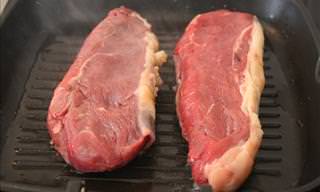
These Tips Will Make Any Meat Taste Like an Expensive Cut
You don't have to buy expensive cuts of meat to get a juicy steak. Here are three tips that'll make a cheap cut taste like an expensive cut.

11 Grease Removal Tips You Wish You Knew Before!
Grease stains can be notoriously difficult to remove, but that will be a thing of the past if you use these 11 fantastic grease-removal methods.

There is a Way to Stop The Flood of Pesky Junk Mail
Insurance offers, catalogs, flyers - we all receive junk mail, and lots of it. But why does that happen and how can we stop, or at least reduce it?

6 Simple and Practical Tips To Organize Your Kitchen
A well organized kitchen is the first step to a gratifying cooking experience
 27:48
27:48
20 Simple and Delicious 3 Ingredient Recipes
This video offers you no less than 20 easy and delicious recipes requiring only 3 ingredients each!
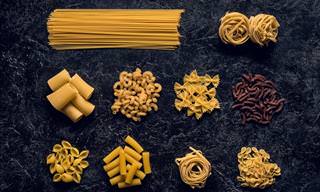
This is How to Cook Perfect Pasta Every Time!
If you struggle with cooking pasta properly, and want to learn how to cook the perfect pasta, check out the these helpful tips!

Stay Away From These Common Items If You Value Your Life!
Here are 15 surprising things that could end up taking your life if you're not careful!
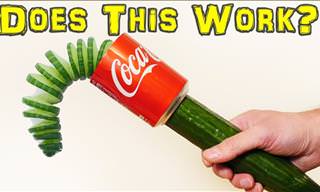 5:33
5:33
Six Super Useful Tips For Cutting Cucumbers
This tutorial is going to teach you some creative ways to slice a cucumber quickly and creatively!

Tip: All You Need to Know About Your Kitchen Knives
This handy quick cheat-sheet for home cooks gives you a quick run-down of what chefs know about their knives, explains the lingo, and gives some great advice!
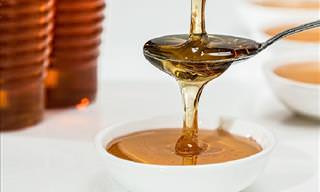
10 Surprising Uses for Honey Outside the Kitchen!
While honey may be an essential ingredient to add to your diet, there are a number of other surprising uses for it too.

Watch: A Simple Breathing Technique to Reduce Stress
This is a slow breathing exercise which works wonders for those anxiety-filled situations you just can't control.

Here’s How to Learn a Language from Scratch for All Ages
Here are 4 effective and fun techniques that will help you learn new words in a new language fast and forever.

8 Awesome YouTube Channels For Simple At-Home DIY Guides
Become a home renovation expert with these awesome home DIY YouTube channels.

12 Amazing Home Fire Safety Tips From Firefighters
Don't let a fire get out of hand. Keep these essential 12 tips in mind.
 2:14
2:14
Make EASY Natural Beeswax Polish At Home!
Watch this video to learn how to make beeswax furniture polish at home.

Have A Stain? Here's How to Remove It Quickly and Easily
We all have occasional "food accidents" that leave stains on our clothes, but you can remove the 18 most common food stains using the following simple methods.

Impress Your Kids & Grandchildren With These DIY Toys
Whether you're looking for a new hobby or a way to save yourself a fortune on kids' toys and activities, this video box has certainly got you covered!
 8:47
8:47
12 Great Home Remedies to Cure Many Daily Ailments
Take note of these useful home remedies that will help you treat various daily ailments.
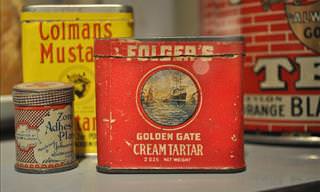
Cream Of Tartar Will Do Wonders For Your Health and Home!
If you've never heard of cream of tartar, you should find out how many different health benefits and uses this wonderful powder has!

Mold Will Be a Thing of the Past With These Home Remedies
Mildew and mold are pesky household invaders. Here are 5 easy ways to get rid of them using just natural household ingredients.
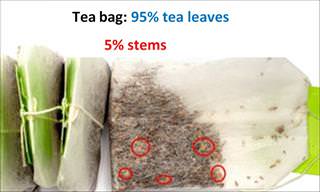
Find Out the 8 "Fake" Foods You Unknowingly Eat Regularly
The coffee and tea you drink, the cheeses you eat and the oil you use may be fake, but now you can recognize whether what you're buying is quality or not.
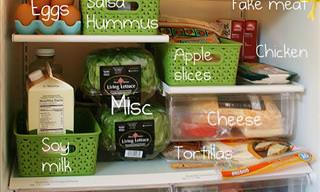
10 Tips for Organizing Your Fridge That’ll Save Time & Money
A tidy fridge will save you both time and money. Follow our 10 tips to organize your fridge and see the difference it makes to your life.
 8:03
8:03
Testing 10 Amazon Phone Gadgets: Are They Any Good?
Are these phone gadgets as good as advertised? Let's check it out.

9 Skincare Treatments My Granny Taught Me
it's time to discover what these 9 special beauty products contain.

Safe & Natural Recipes to Add Scent to Your Home
Forget those fake, unhealthy air fresheners and chemical-packed scented candles. Make your own natural scents and keep your home fresh.
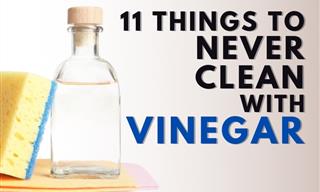
Using Vinegar to Clean These Items Can Really Damage Them
Cleaning these common home surfaces and other items with vinegar can seriously damage them...

A Simple, Easy Guide for Writing Your Living Will
It's not something you want to think about, but writing your will is sure to lift a huge burden from your shoulders. Here's a simple guide.

8 Best Ways to Handle Those Who Constantly Pull You Down
Here are some tips on how to get around people who constantly put you down.

10 Natural Home Remedies EVERYONE Should Know!
Not Feeling well? We recommend that you think outside the box, or in this case outside the medicine cabinet with the following 10 effective natural medicines!

Get Rid of These Body Language Habits Today!
Body language is intuitive, so it can easily convey a wrong message or reveal insecurities. Here are 9 simple tweaks that help you avoid these misunderstandings.
 8:26
8:26
How to DEEP CLEAN Your Windshield Perfectly
Clean windshields are not just nice to looks at but also important for your safety! So if it's time to give your windshield a scrub, check out these important tips.

The Right Way to Fold a Sweater and Keep it Lasting Longer
This guide will teach you exactly how to fold your sweaters.

Here Are Some Money-making Tricks That Restaurants Use
There are numerous tricks that restaurants and cafes employ to make clients spend more money. Here are 11 of these sneaky ploys.
 4:12
4:12
Video Turorial: How to Unclog the Toilet Without a Plunger...
Unclogging the toilet is never a happy task. I was happy to discover this easy method of unclogging the toilet without having to use one.

WD-40 Has So Many Uses I Can Hardly Believe It!
If you think WD-40 has only one use, you'll be utterly delighted by this list of 11 other uses.

Active Stretching: What It Is and How To Do It
Active stretching is a great way to improve flexibility and mobility. Here's how it differs form other forms of stretching and a few useful examples.

7 Items You Might Be Disinfecting the Wrong Way
With the Covid-19 outbreak, disinfecting has become a daily necessity. But some items can be damaged by the chemicals & need a gentler approach
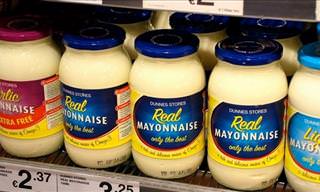
10 Excellent Uses for Mayonnaise Around the House!
Mayonnaise is a great complimentary condiment for food, but did you know there are multiple non-food-related uses for this kitchen staple?

Discover 6 Easy Ways to Clean a Home with Hydrogen Peroxide
We all want to see our homes clean and sparkling, and it turns out that with hydrogen peroxide - something we all have at home- this can be done with ease!

Avoid These 13 Domestic Chemical Reactions and Be Safe
There are certain chemicals and substances that shouldn't mix together, because the result could be catastrophic. Make note of these 13 combinations now.

These Nifty Visual Guides Can Come in Handy For All of Us
Here are some really useful guides with some great life hacks and tips and tricks that can come in handy to anyone.

Keep Aphids At Bay with These Fantastic Home Remedies
Aphids are a pest that can wreck havoc in your garden. Thankfully, there are many simple ways to get rid of them. Here are 10 of them:

Eating Out? How to Pick the Healthier Meals
If you're looking to stay on a healthy diet, we have compiled some recommendations for you regarding what to look out for in various international cuisines.

The One Ingredient in Shampoo that Damages Our Hair...
Most shampoos have at least this one ingredient that might damage your hair - protein.

Guide: How to Use Rising Interest Rates to Your Benefit
Consider these tips to meet your investment goals when rates are rising.

7 Sunscreen Mistakes You Didn’t Know You Were Making
Avoid making these common sunscreen mistakes this season.
 8:02
8:02
DIY Dog Nail Trimming: Keep Your Pup's Paws Healthy
Why visit a vet to trim your pup's nails? Do it at home with these easy-to-follow instructions.


